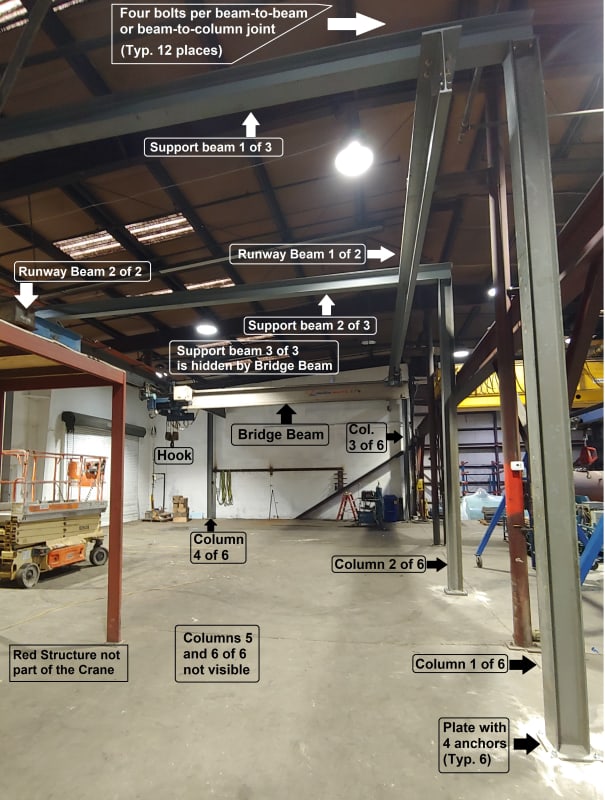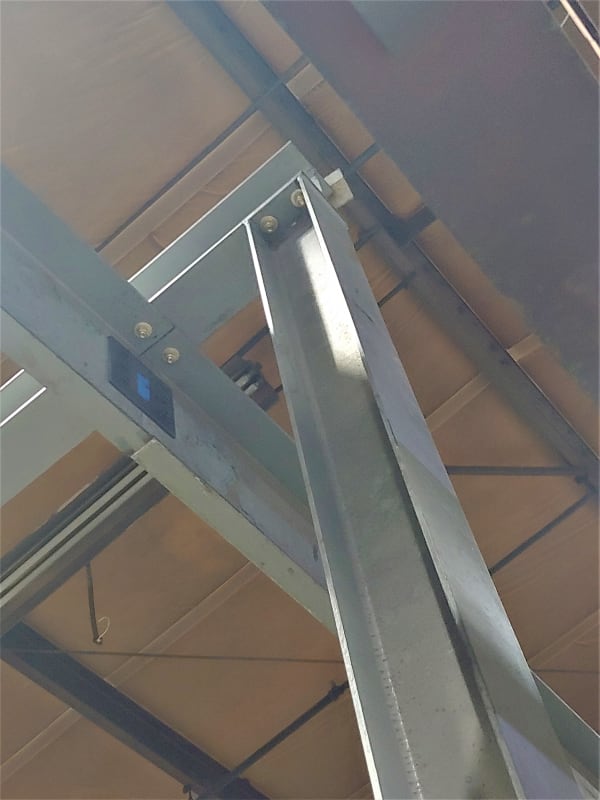I have been assigned the task to analyze the supporting structure of a gantry crane but, being a mechanical engineer, I need to find the applicable methods to determine shear forces and moments on all elements. The supporting structure of the movable bridge beam, as I show in the picture below, is composed of two runway beams joined to three support beams, which are joined to six columns. All twelve joints are rigid, each one made with four bolts. Years ago, I calculated continuous beams using the Three Moment Theorem, but in internet I only find this method applied to beams with more than two simple supports (one of them pinned), but not three fixed supports like in this case. I don’t know how to analyze a 3D structure composed by seven rigid frames joined together, and the company where I work does not have any analysis software. My second question is, after knowing the reaction moments and shear forces at base plates of columns, I need to calculate tension forces at the anchor bolts to the floor. I will have to assume the worst concrete, 2,000 psi, as we don’t have the construction drawings of the building. Any help will be greatly appreciated. Thanks!




![[idea] [idea] [idea]](/data/assets/smilies/idea.gif)